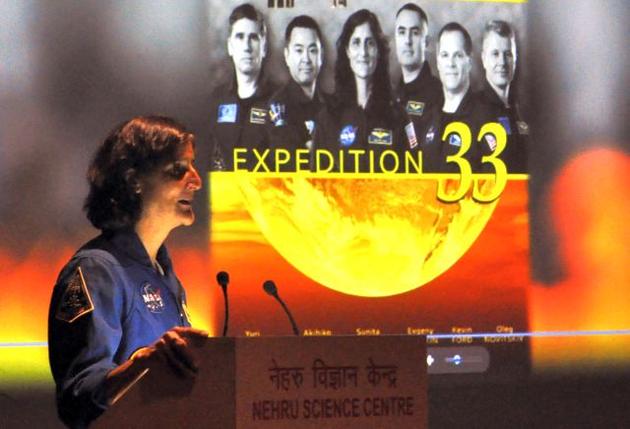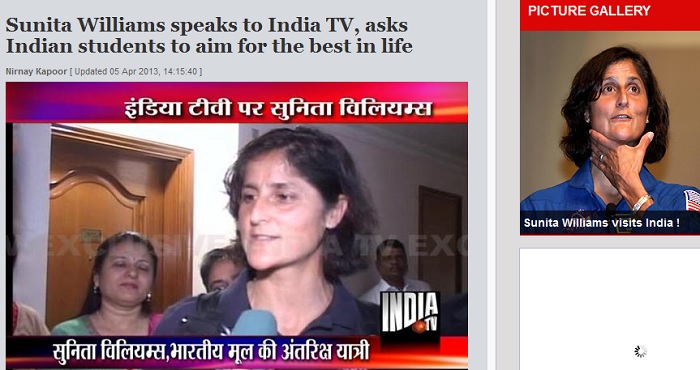.
My dream of going to the moon yet to come true, says Sunita Williams

U.S. astronaut of Indian origin, Sunita Williams addressing school students during an event in Mumbai on Thursday.
.
Sunita Williams, the U.S. astronaut of Indian origin, is yet to realise her dream of landing her spacecraft on the moon and to look at the earth from there.
“I do have one dream yet to come true and that is to go to the moon. It would be awesome to land the spacecraft there and to see earth from that distance. Landing a spacecraft on any other planet would be a great experience,” Ms. Williams said on Thursday at the Nehru Science Centre here. She was invited by the National Council of Science Museums.
Earlier she addressed students from various schools in Mumbai and expressed her wish to see more Indians participate in the international space programme.
“I am really looking forward to India’s participation in the space programme in a big way,” she said. The NASA astronaut, who holds the record for longest spacewalk by a woman, at 50 hours 40 minutes, said: “Space programme entails a lot of creativity and requires great imagination. Follow your dreams to realise your creative potential.”
Asked whether the expedition had changed the way she looked at things on the earth, she said seeing the planet from above makes one feel lucky. “When you see from above, the borders which we have created just do not exist. There are really no borders and it feels sad to see people get into arguments over various issues here on earth.”
During her interactive lecture, she made a video presentation on her latest space expedition — Expedition 33, which was launched from the Biakonur Cosmodrome in Kazakhstan on July 15, 2012. Ms. Williams was the expedition Commander, and was accompanied by Russian Soyuz Commander Yuri Malenchenko and Japan Aerospace Exploration Agency’s Flight Engineer Akihiko Hoshide. Her team spent four months conducting a wide range of experiments and investigations, including testing radiation levels on the orbiting outposts, and assessing how microgravity affects the spinal cord. During this mission, Ms. Williams and Mr. Hoshide performed three spacewalks to replace a component that relays power from the space station’s solar arrays to its systems and repaired an ammonia leak on a station radiator.
She said she loved speaking about her expedition with children. “I feel it is my responsibility to talk about space and make people interested in it. It forces people to think out of the box,” she said, adding that she would also want to work as a science teacher to spread awareness about scientific thinking among schoolchildren.
Quelle: The Hindu
.

6412 Views
